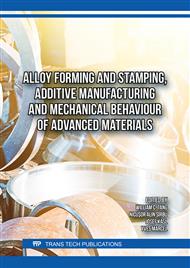p.55
p.71
p.85
p.93
p.105
p.111
p.117
p.123
p.133
Describing Crack Growth via In Situ Measurement of the Electrochemical Potential during Corrosion Fatigue Experiments
Abstract:
The understanding of crack growth and therefore failure of components in geothermal energy production could lower maintenance costs tremendously. During in-situ corrosion fatigue experiments of high alloyed steel in geothermal brine the electrochemical potential was measured as well as temperature, frequency and pH of the surrounding geothermal brine. The decline of the electrochemical potential is in good agreement with estimated increasing linear crack propagation velocity. During initial crack propagation the electrochemical potential is in good agreement with the stress amplitude applied revealing that a steeper decline of potential indicates faster crack propagation. However, towards the end of propagation, this potential becomes independent of the stress amplitude.
Info:
Periodical:
Pages:
105-110
Citation:
Online since:
November 2025
Authors:
Price:
Сopyright:
© 2025 Trans Tech Publications Ltd. All Rights Reserved
Share:
Citation:


